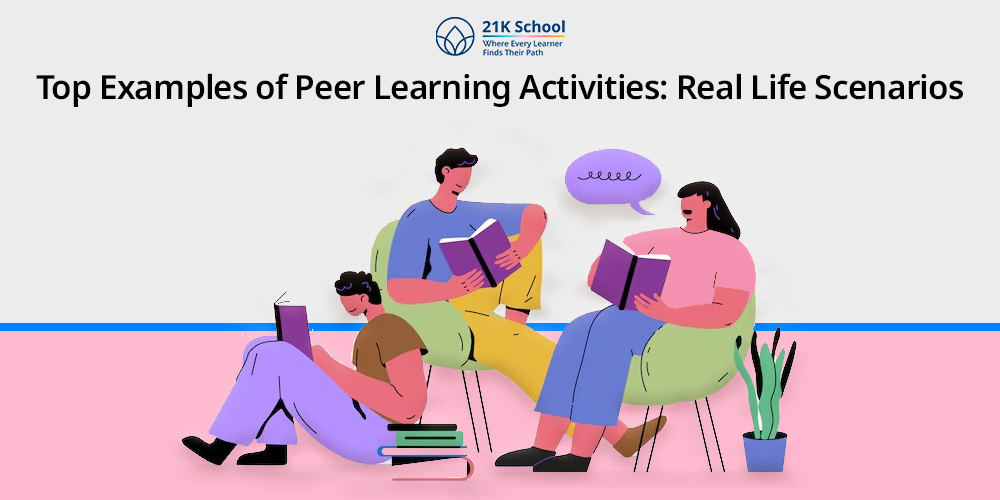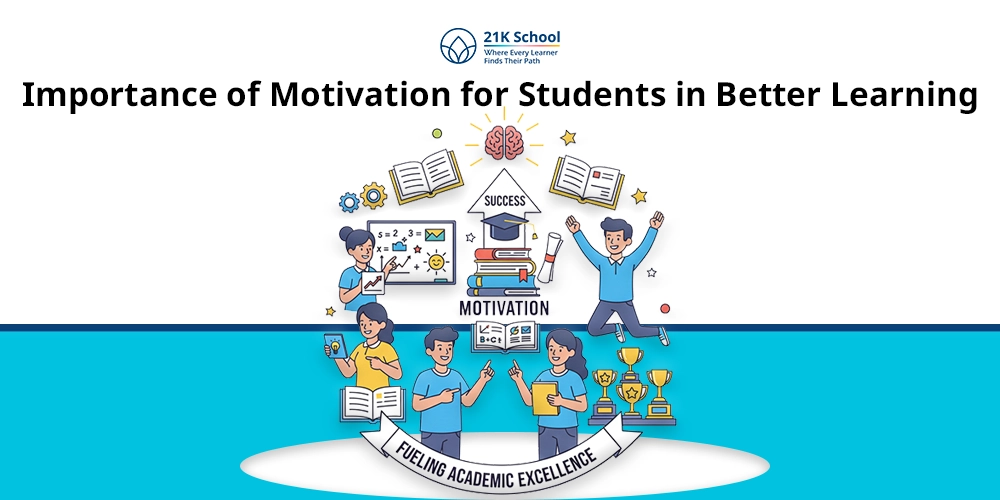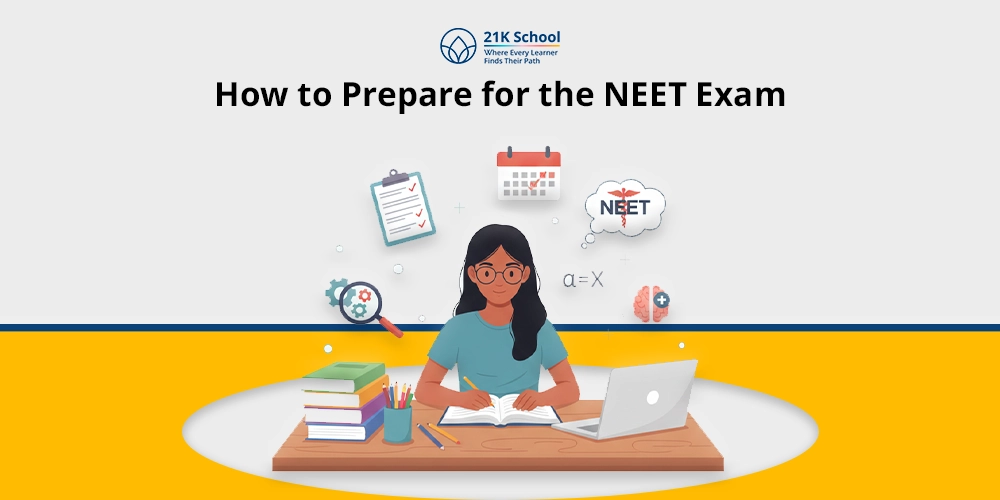
Ever thought about how much peer learning impacts a child’s holistic growth?
Peer learning is nothing but a student learning from the other students with the support of a teacher within the classroom or the educational environment.
They derive this self-confidence and empathy from their peer learning . They can also learn from their friends and fellow classmates through games and activities similar to them. They include different exercises which enhance learning in the students.
A few of the peer learning activities include discussion, debates, role play, board games, storytelling, and so on.
To make students learn and take significant and important experiences, structured activities or games are enhanced and make learning exciting for the students.
Peer learning not only allows a student to learn from each other, it also allows the student to identify areas of learning that the student needs to continue to work on and learn on or identify mistakes the student makes.
Contents
What is Peer Learning?
Peer learning is a student-centred learning method which will give students freedom. Peer learning is a type of dynamic learning environment that helps students in switching on knowledge sharing to each other. It will help students to learn through collaborative learning .
Peer learning is a method in which students will learn the skills of socialisation, collaboration to interact and study in a socialised learning.
Group activities, peer relation, community lunch, group projects and so on are some of the ways through which peer learning can be integrated in class education. This gives students a chance not only to remember but also enhance their communication skills among students.
Top Examples of Peer Learning
Peer learning can be implemented in classroom education through a number of activities and programmes which include group discussion, debate and community programmes. These examples are:
1. Collaborative Problem Solving
In team learning, students can think and criticise an issue among themselves and come up with potential answers. By collaborative problem solving , students are able to create their imagination and to work together in a group on one problem.
For example: Teachers can provide students with problems to single students as well as in groups. Through this, students will be allowed to share their perspective towards a problem in both single and groups.
Each group will be provided with separate questions and see how collaboration helps in increasing the efficiency.
2. Gallery Walk & Peer Commentary
Gallery walk and peer commentary is an amazing peer learning method that focuses on the discussion of information. In this activity children will roam around the class and share their viewpoints with other peers about what they have learned in the class.
In peer commentary, students share their viewpoints and comment on other peers’ activity. This will help in discussions and understanding responses about other activities.
For Example: Students will draw different ideas on any poster or board by writing any names or words. Children are better able to understand and give feedback based on the responses of others.
3. Peer Review & Feedback
Peer review and feedback represent another excellent example of peer learning through which students can learn through revisions. With it, children can learn from their mistakes while also coming to understand another person’s information.
Therefore, all students will be engaged in whatever is happening, and learning throughout the process, through their mistakes.
For Example: Students can talk about their exams and learn together with their own mistakes, where one student may ask another student to read over his/her question and tell about the mistakes; so other students will get more accurate information.
Subject-Specific Examples of Peer Learning Activities
Peer learning activities help in learning various concepts and information regarding subjects. This enables students to learn with feedback and group activities and it becomes easier for students to grasp the views of others.
Peer learning is good in all subjects like Maths, Science, Language, Social Studies and others. This enables students to grow and enhance their self-confidence and increases their knowledge recall.
1. Social Studies Peer Learning Activity
The use of peer learning has also been applicable in learning social studies because of the convenience with which learning of difficult concepts becomes easy. Peer learning makes it easy to understand History, Civics and Geography. The social lessons that will be learned are as follows.
1.1 Debate
A debate means students who keep on arguing on a particular topic. Debate also improves the eye contact communication skills of students. Debate makes a student’s learning fun and interesting.
1.2 Group projects
The group projects are an effective way to bring cooperation within one group and to make learning fun . Group work can be of different types, and examples of group work are such as Group mapping, Group presentations, Map pointing, etc.
Group work can make learning effective and cooperative. Thus, there are many types of learning environments.
1.3 Role play
Role play is a participating way of students learning methods. In role play, students play any character they like. History students are liberated to participate in any peer learning event to grow interest for any sub-topic that has seemed crisp and complex.
For example: In History subjects, if a student is studying about dynasties, then he/she can play a role of a soft king, make a scenario, or any characters. This adds confidence to study and learn complex concepts with simplicity.
2. Peer Learning events in the Language Arts.
The peer learning activities play an important role in improving the language arts for students. It enhances the vocabulary of the students.
2.1 Literature Circles
Literature circles is a way of peer-to-peer learning method in which students read numerous books and discuss their results with other classmates. According to sources, this increases students’ engagement towards learning and gives them a new perspective of learning.
2.2 Board Games
This peer learning activity helps the children to identify various words and understand various relationship orientations of one word and another.
2.3. Sharing Story
Another language-based peer activity is collaborative story telling in which all students will make a story or read the story, where other students will listen and understand it. This will assist them to learn the concepts and express their point of view.
3. Science Peer Learning Activities
Peer learning activities of science are those science-related concepts shared through peers. In science, peer activity helps children understand tough concepts with peer learning’s help. Several strategies and activities help to explain peer learning are as follows:
3.1. Reciprocal Teaching
In reciprocal teaching, students work in groups and share their own thoughts with others. In reciprocal teaching, one peer of a group explains the answer to other students, enabling them to better understand complex concepts.
3.2. Group Project
Group projects are an effective strategy to learn practical science experiments . Through implementing peer learning strategy in science experiments, students will be better able to share their understanding with others.
They can indulge in various science modelling, working experiments and models and so on as well as learn from their mistakes.
3.3. Jigsaw Method
The jigsaw approach is helpful for students to collaborate and solve problems more efficiently. Each group of students will be given different issues, and they will work to complete that one and look for new solutions.
4. Mathematics Peer Learning Activities
Peer learning is highly applicable in Mathematics in which students find it easier to understand math concepts. Peer learning is also useful with children in Maths since they can work in groups, and since they can also learn to teach one another.
4.1. Numbers Head Together
Number head together is a peer activity where students will be grouped in numbered numbers. Each group will be given out a task and each group will need to share work calling by the number. This exercise enables students to work as groups and seek answers to complicated subjects.
4.2. Maths Puzzle
Maths puzzle is yet another powerful tool which enables the students to know what other students have learned by their concept. Maths puzzles allow students to train their intellectual way of thinking and enhance Mathematical calculations.
4.3. Group Alternation
Another form of peer learning strategy is known as group alternation and works on the basis of sharing ideas with one another.
This will involve having one student presenting his/her task to another student and another be doing the same. This will enable students to advance the level of their understanding and easier mathematics.
Age-Specific Examples of Peer Learning Activities
Each of the age groups needs a specific peer learning strategy to enhance the effectiveness of learning among the students. This enables students to learn properly through the intervention of all the other viewpoints and perspectives of the students.
1. Elementary Examples (K-5)
1.1. Reading Activities
Younger students are matched with the older ones to read to them. The elder reads and the younger reads and asks questions to each other to verify the perception. This enhances reading and enhances learning.
1.2. Learn by Teaching
Upon grasping a new concept or skill, students explain the learned concept to one of the students in the class. This enhances the interest of students and their knowledge and understanding ability.
2. Middle School Examples (6-8)
2.1. Peer Writing
Students review each other’s writing using structured rubrics or guided questions. This will enable students to work in groups/ pairs, students receiving and giving constructive feedback. This will enable them to learn to write, as a result of a learning community.
2.2. Jigsaw Activities
Jigsaw activity is very much the same as jigsaw puzzle. Jigsaw activities are one of the effective methods of learning concepts in small groups. Students are divided into small groups, and each group learns a sub-topic of the theme.
3. High School Examples (9-12)
3.1. Study Circles
A study circle is a structured learning technique where open discussion is supported and the exchange of experiences and problem-solving is done with the co-learner.
In this way, students can enhance their understanding of knowledge and comprehension. Various researchers proved that the critical thinking process is enhanced in students through the study circles.
3.2. Peer Mentoring
The other way is peer mentoring, which literally means learning with a peer and getting a fresh perspective on learning. Learning through peer mentoring allows groups of peers to engage, ask questions, discuss and provide feedback to every co-learners.
Peer mentoring provides the students with an active learning experience and engages without any stoppage due to any barrier and inequalities.
Digital Peer Learning Activities
There is a big contribution of technology in the education of the students and the online learning platform has a large proportion of the peer education programme. Students can take a part in the programme from any location.
Online learning tools are an effective way to connect with others at once, and students can communicate digitally from any location. This becomes easy with the help of virtual learning platforms or e-learning platforms .
Communication will be achieved with peers with the virtual learning platforms . So it is important to increase the virtual tools because they can help many students to interact to solve problems.
2. Asynchronous Peer Learning
Such tasks encourage subsequent thought processes and critical analysis due to the fact that they are not time-based and allow peers to have time to interact amongst themselves.
After posting their ideas, queries and opinions on the course material students respond to those of their peers.
Conclusion
Peer learning is one of the best teaching techniques that promotes team learning and critical thinking, as well as development of critical social and communication skills.
Through various activities such as group projects, debates, peer tutoring, and cooperative problem-solving, students are not only able to pursue further into academic concepts but they also acquire confidence and the capability of engaging in useful conversations.
Peer learning is a multitasking resource which may be implemented in the online environment, as well as in the traditional classroom , to support the process of learning inclusively and actively.


